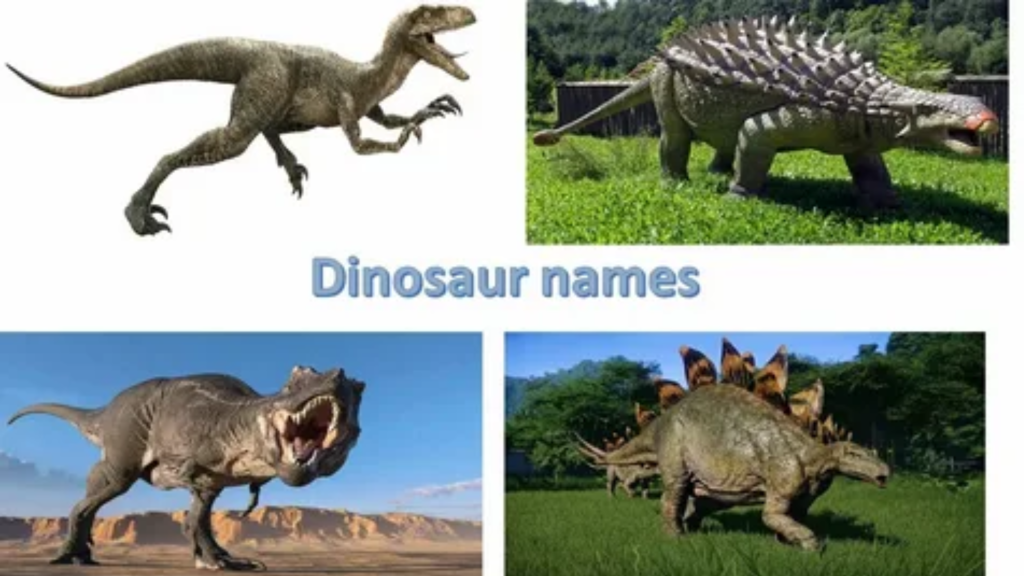Water dinosaurs though technically not true dinosaurs—were powerful marine reptiles that ruled Earth’s oceans millions of years ago. These ancient creatures weren’t just sea-dwellers; they were apex predators with unique adaptations for life underwater. In this guide, you’ll find the names of 20 water dinosaurs (marine reptiles), complete with clear, simple descriptions for each.
📘 Table: 20 Water Dinosaurs Names and Groups
| # | Name | Group |
|---|---|---|
| 1 | Plesiosaurus | Plesiosaur |
| 2 | Elasmosaurus | Plesiosaur |
| 3 | Kronosaurus | Pliosaur |
| 4 | Liopleurodon | Pliosaur |
| 5 | Mosasaurus | Mosasaur |
| 6 | Tylosaurus | Mosasaur |
| 7 | Ichthyosaurus | Ichthyosaur |
| 8 | Shonisaurus | Ichthyosaur |
| 9 | Temnodontosaurus | Ichthyosaur |
| 10 | Basilosaurus | Prehistoric Whale |
| 11 | Nothosaurus | Nothosaur |
| 12 | Thalassomedon | Plesiosaur |
| 13 | Cryptoclidus | Plesiosaur |
| 14 | Pliosaurus | Pliosaur |
| 15 | Ophthalmosaurus | Ichthyosaur |
| 16 | Dakosaurus | Crocodyliform |
| 17 | Platecarpus | Mosasaur |
| 18 | Clidastes | Mosasaur |
| 19 | Metriorhynchus | Marine Crocodile |
| 20 | Atopodentatus | Herbivorous Reptile |
What Are Water Dinosaurs?
Though often referred to as “water dinosaurs,” the correct term is marine reptiles. These creatures lived during the Mesozoic Era, the same time dinosaurs dominated the land, but they belonged to different groups like Plesiosaurs, Mosasaurs, Ichthyosaurs, and Nothosaurs.
They had fins instead of legs, streamlined bodies, and many had sharp teeth designed for catching fish or squid.
20 Water Dinosaurs Names with Descriptions

1. Plesiosaurus
A famous long-necked marine reptile with a small head, broad body, and four flippers. It used its strong limbs to “fly” through water like a sea turtle.
2. Elasmosaurus
One of the longest-necked plesiosaurs, reaching up to 46 feet. It had over 70 neck vertebrae and likely hunted small fish in shallow seas.
3. Kronosaurus
A giant short-necked pliosaur, about 33 feet long, with a massive skull and powerful jaws—perfect for biting through tough prey like turtles and other marine reptiles.
4. Liopleurodon
Known for its enormous size and biting force. Some estimates suggest it reached up to 50 feet. It had large flippers for fast swimming and was a fearsome predator.
5. Mosasaurus
A massive sea lizard and one of the top marine predators. It could grow up to 56 feet long and had double-hinged jaws to swallow large prey.
6. Tylosaurus
A close cousin of Mosasaurus. It had a long, torpedo-shaped body and a blunt snout. This predator dominated the Western Interior Seaway in North America.
7. Ichthyosaurus
A dolphin-shaped marine reptile that lived early in the Mesozoic. It had big eyes, a fish-like tail, and gave birth to live young—unlike most reptiles.
8. Shonisaurus
A giant ichthyosaur reaching up to 69 feet. It had a slender body and likely hunted squid and soft-bodied animals in deep waters.
9. Temnodontosaurus
Another ichthyosaur known for its enormous eyes—the largest of any known animal. It was a swift predator that hunted fish in open seas.
10. Basilosaurus (often mistaken for a dinosaur)
Though technically a prehistoric whale, it’s often lumped with sea dinosaurs. It had an eel-like body and was about 60 feet long.
11. Nothosaurus
An early marine reptile with long limbs and webbed toes. It likely hunted fish in coastal waters and could walk on land, too.
12. Thalassomedon
Its name means “Sea Lord.” This long-necked plesiosaur had flippers nearly 7 feet long, helping it glide through water in search of prey.
13. Cryptoclidus
A medium-sized plesiosaur with a short skull and needle-like teeth, perfect for catching small fish and invertebrates.
14. Pliosaurus
Part of the pliosaur group, it had a bulky body, short neck, and enormous jaws filled with sharp teeth. Some species reached up to 40 feet.
15. Ophthalmosaurus
An ichthyosaur named for its large eyes, ideal for hunting in deep or dark waters. It could swim fast and escape predators quickly.
16. Dakosaurus
A marine croc-like reptile with serrated teeth, adapted for slicing meat. It hunted similarly to modern sharks and dolphins.
17. Platecarpus
A smaller mosasaur, about 14 feet long. It was agile and likely hunted in schools, preying on fish, squid, and even other marine reptiles.
18. Clidastes
Another sleek mosasaur, it had a flexible body for fast movement and was one of the earliest mosasaurs adapted fully to ocean life.
19. Metriorhynchus
A marine crocodile with flippers and a tail fluke. It was a fast swimmer and had salt glands—evidence of full ocean adaptation.
20. Atopodentatus
A strange marine reptile with a hammer-shaped snout. It likely scraped algae off rocks, showing that not all marine reptiles were meat-eaters.
Key Differences Between Water Dinosaurs and Land Dinosaurs
| Feature | Water Dinosaurs (Marine Reptiles) | Land Dinosaurs |
|---|---|---|
| Habitat | Oceans and seas | Land |
| Limbs | Fins or flippers | Legs for walking or running |
| Breathing | Lungs (surface breathers) | Lungs |
| Common Groups | Plesiosaurs, Ichthyosaurs, Mosasaurs | Theropods, Sauropods, etc. |
| Birth Method | Some gave live birth | Most laid eggs |
Conclusion
This list of 20 water dinosaur names offers a fascinating glimpse into the ancient oceans. These marine reptiles were as diverse and deadly as their land-dwelling cousins. From the long-necked Elasmosaurus to the fearsome Mosasaurus, each creature played a unique role in the Mesozoic marine ecosystem.
If you’re looking to dive deeper into prehistoric life, these names provide the perfect starting point. Whether you’re a student, a curious reader, or a budding paleontologist, understanding these ancient sea creatures will help paint a fuller picture of Earth’s ancient past.

